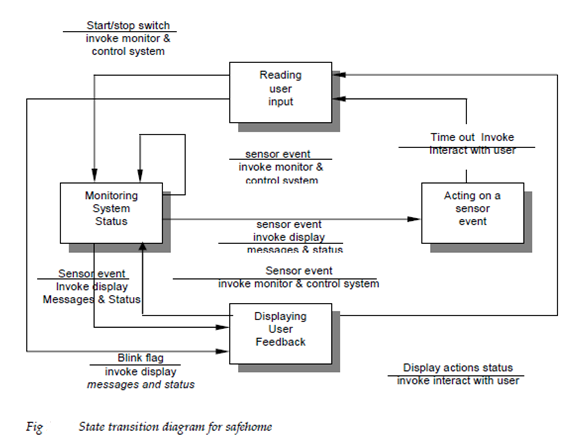The Control Specification
The control specification CSPEC represents the behavior of the system at the stages from that it has been referenced in 2 different categories. CSPEC contains a state transition diagram STD which is a sequential specification of behavior It can also contain a procedure activation table PAT a combinatorial specification of behavior. Fundamental attributes of the CSPEC were introduced. It is now time to take an example of this important modeling notation for structured analysis.
In the Figure depicts a state-transition diagram for the level one flow model for Safe Home. The labeled transition arrows point to how the system responds to events as it traverses the 4 states described at this stages. Through studying the STD a software engineer can determine the behavior of the system and more important can ascertain whether there are holes in the specified behavior. Example for the STD indicates in which the only transition from the reading user input state occurs when the start or stop switch is encountered and a transition to the monitoring system status state happen. Since there appears to be no way other than the occurrence of sensor event which will allow the system to return to reading user input. This is to determine whether there are any other anomalies and error in specifications.

A somewhat dissimilar move of behavioral representation is the process activation table PAT. PAT represents information contained in the STD in the circumstance of processes not states. Which is the table indicates that processes in the flow model will be invoked when an event occurs. PAT can be used as a guide for a designer who must established an executive which controls the processes represented at this level. PAT for the level one flow model of Safe Home software is shown in Figure.
The CSPEC define the behavior of the system but it does not provide us any information about the inner working of the processes which are activated as a result of this behavior.